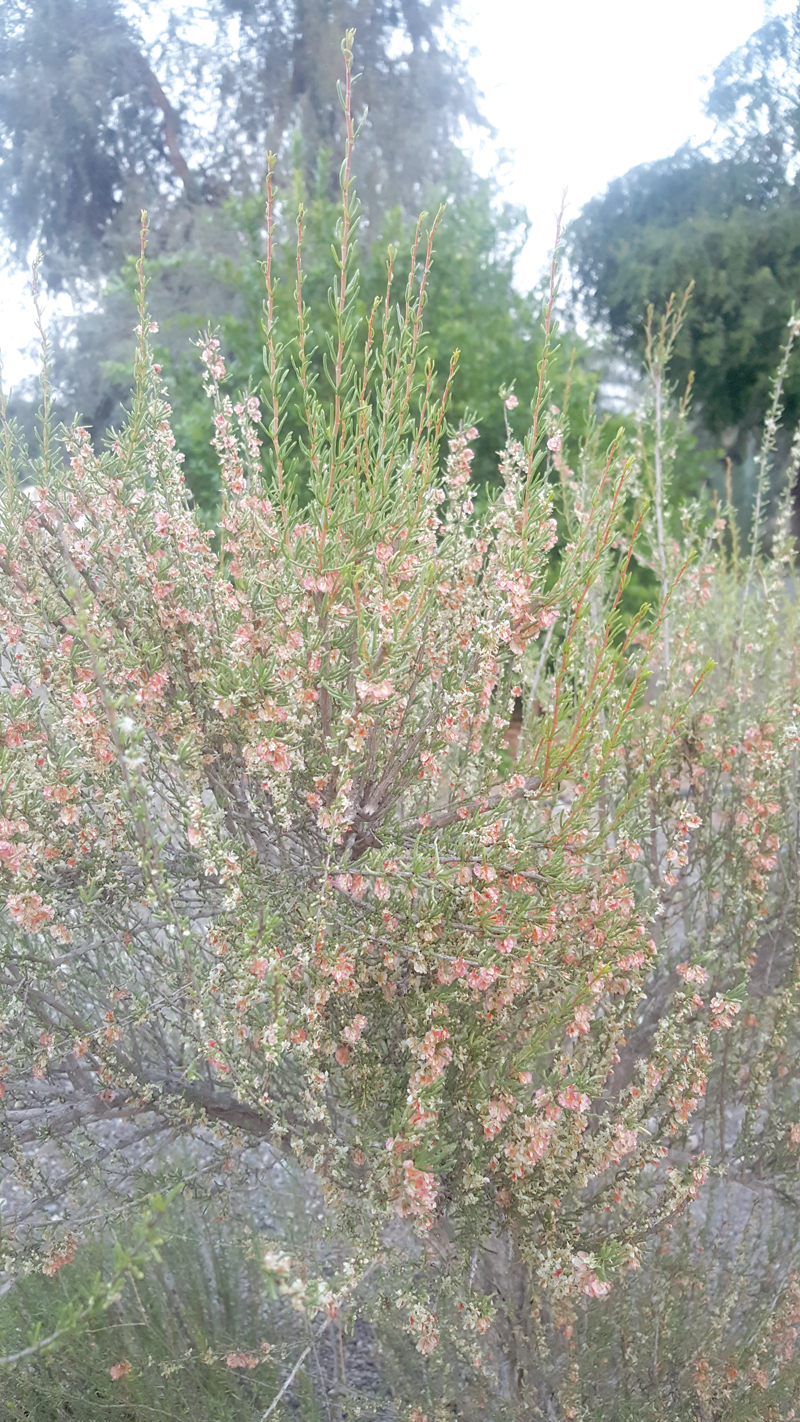

“Pteropyrum scoparium” is a big name for a small but medicinally important plant native to Oman’s Al Hajar Mountains. It is locally known as Sidaf and has been used for generations to treat indigestion. Sidaf is a very popular species in Oman and one of its top uses is being an additive to Omani traditional dishes, especially in the Interior.
This plant that can grow up to 2 metres grows in the northern parts of the Sultanate, in rocky valleys or slopes, and even on mountains located 600 metres above sea level.

Sidaf is extinct in some wadis in Oman. There are different reasons for this but the primary causes are soil degradation brought about by the transfer of sands for construction or landfill, soil erosion due to natural conditions, and because of the long drought experienced in some areas. Some of the areas where they used to thrive but are now dwindling in numbers include Wadi al Jifnain and Wadi Yiti especially after Hurricane Guno.
Other local names of Sidaf are Zadif, Nizdaf, Hamdha, and Qardheeb.
This wild plant is rampantly used all over the Sultanate in the past. To make a delicious dish out of this plant, people combined them with lemon, dried sardine fish, lettuce, chili, onion, ghee and even with Omani traditional dry bread.
Some also used the plant as a healthy drink. Its crushed stalks are used to prepare certain kind of tea which is considered useful for the treatment of liver disease, according to a research paper by SQU students conducted in 2015. The extracted sap from the stalks is also used to coagulate milk.
Omani farmers, entrepreneurs and pharmaceutical companies could all gain from the Sultanate’s reserves of indigenous medicinal plants if they’re used sustainably and creatively, according to the Oman Animal & Plant Genetic Resources Center, OAPGRC.
Al Khatab Ahmed, interested in the wild species, shared his personal experience with the breeding of this species. He said “get a 20 cm long stem of the plant and cover the bottom of the stem with any stimulating hormone-like cinnamon and honey. You instill the stem in a pot filled with soil and compost. Put half of the stem under the soil and put it in a proper place. Preferably, you start growing this plant in February.”
Oman Observer is now on the WhatsApp channel. Click here



